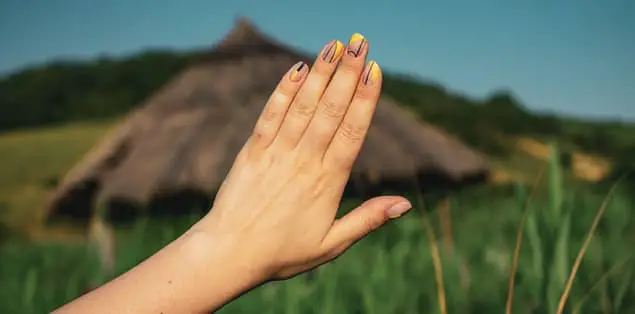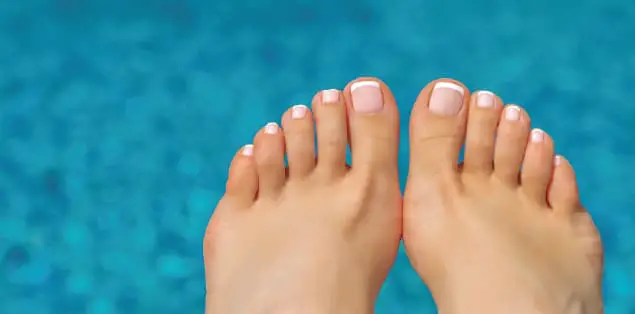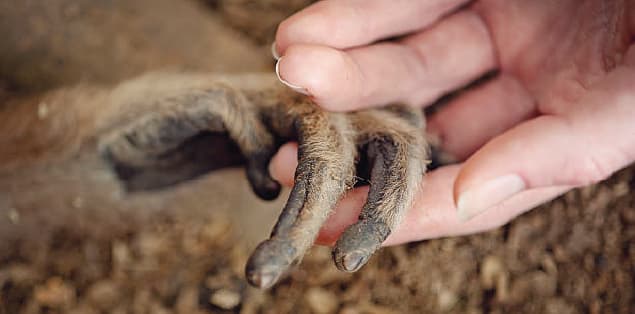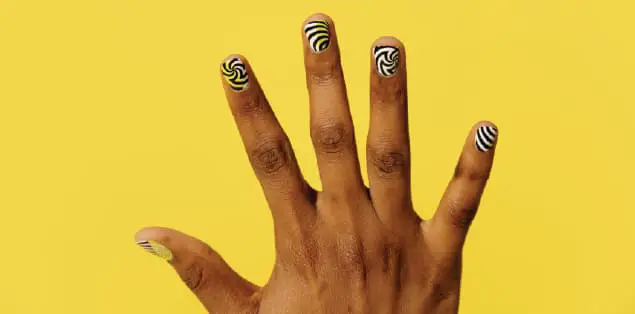You scratch my back; I scratch yours. Because that’s why we have nails, right? Do we have nails to clean stuff from under our nails or scratch our heads when we get confused?
Have you ever taken a moment to look at your fingernails or toenails and wonder what their purpose is? Sure, you can paint with them, scratch with them and even use them as weapons, but it’s frustrating when you have to trim them. So let’s learn why do we have nails and toenails.
Why Do We Have Fingernails?

Evolution has the answer. We have fingernails because our primate ancestors had them, and they passed them to us. One characteristic that distinguishes primates, including humans, from other mammals is their fingernails. Nails are claws that have been flattened.
This scientific explanation has gotten a little complicated since then. Part of the reason it is complex is that nails evolved more than 50 million years ago. Like most other traits, this evolutionary trait evolved slowly through natural selection over a long period. According to a study published in the American Journal of Physical Anthropology, the earliest evidence we have of fingernails on primates comes from 55.8 million years ago. As per scientists, once we began employing tools regularly, we no longer required nails for some tasks, and our lives transformed. So it makes sense. Why dig with your fingernail when you have a crude shovel?
We use tools much more than other primates did in the older days, so it’s no surprise that human fingertips are the broadest in the ape kingdom. We have developed to have the least need for claws. Therefore, our “claws” look very different from our ancestors.
So, you might think that only our ancient primate cousins needed fingernails, but that is not the case! What purpose do human fingernails serve now? The nerves in the tips of fingers are vulnerable, allowing them to sense surfaces or contact quickly and correctly, increasing finger function when picking up small or difficult-to-grasp things. The fingernails protect these nerves (and fingertips), which help us avoid discomfort when irresponsible.
Fingernails can also assist us in picking up tiny objects that are difficult to hold with the blunt tips of our fingers. Fingernails give a rigid backing to help you grip and separate small things. For example, something exceedingly thin laying on a flat surface, like a needle.
Why Do We Have Toenails?

And again, evolution has the answer. Toenails were useful and claw-like at some stage in human development; thus, we have them because our forefathers did. So you might be thinking they are something to trim and paint and look all glamorous. But that’s not it. They are useful.
As we have all learned the hard way, the tops of toes are prone to injury and stubbing. Toenails assist us in balancing by applying counter pressure to the toe and acting as a counterbalance for improving our spatial awareness. Persons who lose toenails face problems maintaining balance. Moreover, toenails could exist to safeguard our delicate toes when we aren’t wearing shoes, especially given how late humans started wearing footwear.
What Are Human Nails Made of?
Contrary to popular belief, nails are not a type of bone. The significant component of fingernails and toenails is keratin cells. Keratin is the same chemical that your body uses to create hair and the top layer of your skin. Keratin also makes up the hooves, claws, and horns of animals. It protects and strengthens nails, making them resistant to harm.
Nails have many parts; nail plate, which is the visible part of the nail; nail folds which are the folds of skin around your nails; and nail bed which is the area of skin covered by your nail. The tissue that covers the bottom of your nail to protect freshly generated Keratin as it grows is called a cuticle. A lunula is a white half-moon that appears at the base of your nail.
Nails begin at the nail root, which is buried beneath the cuticle. Three layers of Keratin make up your fingernails and toenails. When the nail’s root cells expand, they push out the old nail cells. Keratin, a protein produced by these cells, causes these aged cells to flatten and harden and create a protective shield. After then, the freshly made nail moves along the nail bed, which is the flat area beneath your nails. The nail bed rests on top of tiny blood veins that supply it with nutrients and give your nails their pink hue.
How Did Early Humans Cut Their Nails?
Early humans did not cut their nails; they trimmed them with a flint edge or filed them with a rough stone. These were some of the only tools at their disposal at that time. Because early men utilized their fingernails as tools, they were mostly worn down. Primitives made stone tools, dug holes, made clothing, prepared food, and ate with their hands.
Your toenails will naturally wear down if you spend your day walking barefoot and scraping up roots with your hands.
Do Animals Have Nails?
The simple answer is yes; primates are our closest cousins. Animals such as apes, monkeys, gibbons, bonobos, gorillas, and orangutans have nails on all of their fingers and toes. Chimpanzees, our closest relatives, have flattened fingernails that are a testament to our evolutionary heritage.
Do Monkeys Have Nails?
Yes, well, most of them do. Although most monkey species have nails like humans, this is not a universal trait. The scientific findings indicate that primates that evolved into mammals like apes, humans, and monkeys had a specialized claw known as a “grooming claw.” The “grooming claw” was a prominent feature in the earliest primates dating back at least 56 million years. Grooming claws have also been discovered in different lineage of primates, including lemurs, galagoes, and tarsiers.
The study, published in the Journal of Human Evolution, found that nails may have proven more practical than claws as we progressed in climbing, gripping, and leaping. This is because claws could snag or get in the way.
This feature gradually evolved into nails as complex social structures developed, and they had each other to depend on.
Why Do Monkeys Have Broad Fingertips?

The quick answer is their lifestyle. Ape, lemurs, and monkeys spend a lot of time in trees, and their broad fingertips help them climb large tree trunks and hang underneath branches. Broader fingertips allow them to have an excellent grip to climb and grasp small branches of trees.
Scientists believe that primates may have shed their claws and developed broad fingertips topped with nails to aid mobility. Claws would have given an excellent gripping ability to our mammalian ancestors climbing enormous tree trunks. But for large-bodied primates, it would have been a nuisance while scurrying across tree canopies seeking fruits. Therefore, they developed broad fingertips to suit their lifestyle.
Fingernails enabled the fingertips to develop an essential purpose – grip. Broad fingertips without a sturdy structure to support them would flop around and be useless. Still, fingernails allowed the fingertips to acquire a vital grip function.
Nails-Indicators of Good Health
It might amaze you to discover how nails are a giveaway for your overall health. They serve as indications for a variety of health conditions. For example, it would be more challenging to check for illnesses immediately if you didn’t have them.
Nails are smooth, but they may develop dips, bumps, pits, and lines when a person becomes ill, which signals a health problem. Nails can also become spooned or down-turned at the tips, showing various health problems. For example, doctors earlier took your hand and ran a finger down a couple of nails to get an idea about your health.
Final Words – Why Do We Have Nails?
Let us imagine if we lost toenails or fingernails. How would we be able to perform our everyday tasks? For example, the million-dollar nail industry would exist as there would be no customers. Life would have less colorful hands. But, on a serious note, your talons serve many practical purposes, so don’t take them for granted!
